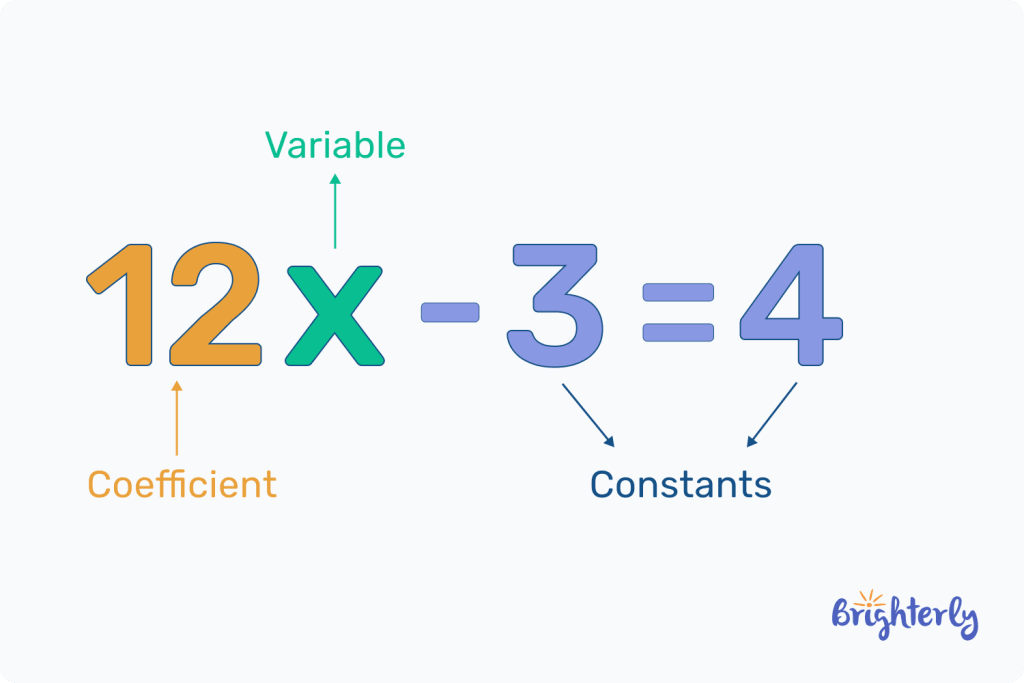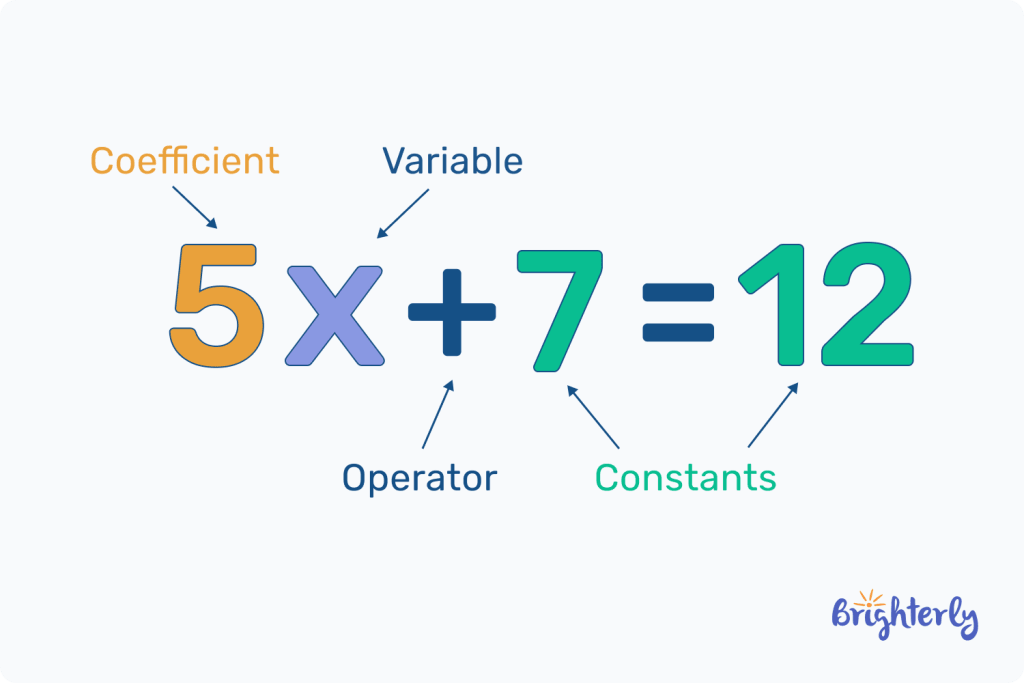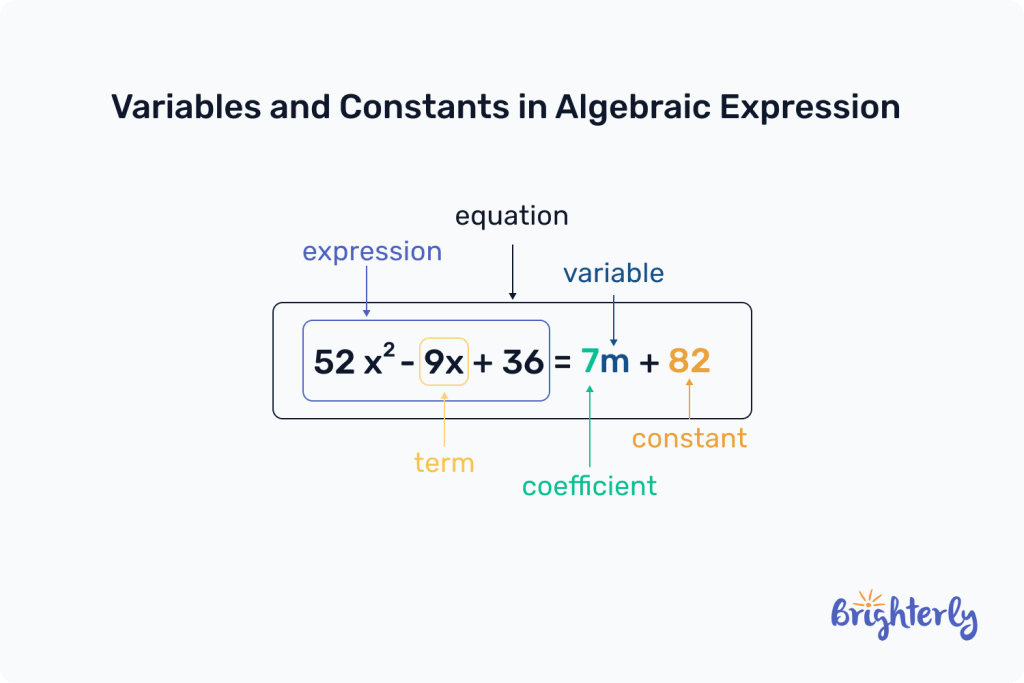What Is a Constant? Definition, and Solved Examples
reviewed by Jo-ann Caballes
Updated on October 28, 2024
Are you ready for another informative article from Brighterly that makes learning mathematical concepts easy and fun?
Today, we’re going to be discussing one of the most fundamental entities in every area of math, from arithmetic to algebra: the constant.
Constants are present everywhere in the world of math and in everyday life, so they are an essential concept to understand.
Here, we’ll cover the constant meaning in math, what a constant term in math is and how to recognize a constant in an algebraic expression or equation. We’ll also help you hone and practice your knowledge with our solved practice questions and cool game-based math worksheets.
What is a constant in math?
Put simply, a constant is a number or a symbol. But of course, it’s more than just a number or a symbol – there are specific characteristics of a constant. It appears in everything from expressions to equations and more, so it’s a fundamental concept to understand. We define constant in full, including math constant terms and constant numbers, below.
Сonstant definition
The constant definition math is a number or symbol that never changes – it always remains the same. This unchanging value can be seen in equations and expressions alongside variables, which are the opposite of math constants and do change.
The characteristics of a constant are that it is an unchanging number, whether represented by a number or a symbol.

What does constant mean: example
When it comes to understanding what a constant means in math, it can be helpful to illustrate it with examples. We’ve provided 3 examples below:
- An example of a constant symbol
- An example of a constant in an expression
- A real-life example of a constant
Constant example 1
There are some mathematical symbols that represent constants – i.e. fixed constant numbers that will never change.
One example of this is pi (π), which represents the unchanging number of 3.14159265359. In an equation where pi is a standalone symbol or number, it is a constant term in math. For example, if we have the equation 5 x π = 15.7079632679, every term in the equation is a constant, including pi.
When used to represent Euler’s number, e can also be considered a constant, because this is another unchanging number.
Constant example 2
Constants are commonly featured as numbers in expressions and equations. If we take the example of 12x + 14, 14 is our constant, because that number will never change. However, the 12 is an example of a coefficient, because this multiplies by the variable of x. We explain how coefficients work in expressions and equations a little further down in this article.
Constant example 3
Think about the size of the shoes you’re wearing. Your feet may change size as you grow older, but will your current pair of shoes? No, they will never change in size! That means that the size of the shoes you’re wearing is a constant – they will never get bigger, they are set at a fixed size.
What is a constant term?
A constant term specifically refers to constant numbers in an algebraic expression or equation that will never change. If we use the example of the quadratic polynomial of x² + 4x + 6 = 0, 6 is our constant term, because it is the only math constant that is unchanging. 4 is a coefficient, because it is being used to multiply the value of x.
How to recognize a constant in algebraic expression
To recognise a constant in an algebraic expression, you need to look out for the following criteria:
- A standalone integer (whole number) – if a whole number is a standalone term in an expression and isn’t combined with a variable, it is a constant – for example, in 5y + x, there is no constant, but in 5 + x, 5 is a constant because it is a standalone number
- A symbol that represents a standalone number, such as the pi symbol (π)
- Fractions, which also represent an unchanging constant
- Decimal numbers and constant numbers with decimal places – because they are still numbers, they represent constants
If your number or symbol meets any of this criteria, you can be confident it is a constant term in your algebraic expression!

The difference between constants and variables
In algebraic expressions, you’ll have different types of terms. One of those terms is a constant, which is your number or symbol that represents an unchanging value. The value of a constant is always known, even if it is a symbol – for example, we’ll always know the value of pi (π).
A variable, on the other hand, represents a number that can be changed depending on its usage. Variables will be represented as either letters or symbols, but they are ones that can be changed. Unless in a solvable constant equation or expression, the value of a variable is unknown.
A coefficient is the other type of term you might see in an expression. This represents a number and a variable combined, and the variable is to be multiplied by that number. Expressions will often feature operators too – addition, subtraction, multiplication and division symbols.

Solved math tasks: examples
Now that you know all about constants in math, are you ready to put that knowledge to the test? Try out our solved math tasks below, which are all about constants in math, and check your answers afterwards to see how many you got right.
Solved math task 1
You have the algebraic equation 6x + (3y – 4) = 12. Identify the constant terms in this equation.
Answer:
| The constant terms are 4 and 12. |
This is because they are the only two terms in the equation that are unchanging. 3y is a coefficient, because we are multiplying y by 3, and so is 6x. Therefore, they are not constant terms.
Solved math task 2
You have the algebraic expression π + (x + 13) = 24. Identify the constant terms in this equation.
Answer:
| π, 13 and 24 are the constant terms in this equation. |
This is because π always represents a fixed number, and therefore is an unchanging constant. 13 and 24 are also unchanging constant numbers, therefore they too are constants.
Solved math task 3
You have the equation of x + (y – a) = 14. Identify the constant terms in this equation.
Answer:
| 14 is the only constant term in this equation. |
That’s because all other terms in this constant equation are variables.
Constant in math: practice math problems
Constant in math: worksheets
Practice makes perfect when it comes to mastering constant numbers and algebraic expressions. Our fun math worksheets include lots of exciting activities to boost your knowledge, practice working with constants and make you a constant algebra whizz!
- Evaluating expressions worksheets
- Algebraic expressions worksheets
- Factoring quadratics worksheets
- Factoring polynomials worksheets





